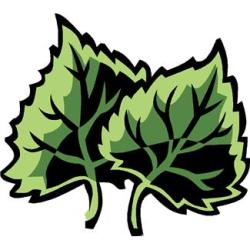Source Institutions
Source Institutions
Add to list Go to activity
Activity link broken? See if it's at the internet archive

In this activity, learners calculate the number of milliliters of water a nearby tree transpires per day. First, teams of learners go outdoors to collect five leaves from a mulberry or cottonwood tree. Next, learners calculate the area of each leaf and the total area of the five leaves together. Then, learners submerge the leaves in a beaker half full of spring water with a small layer of mineral oil on top. After 24 hours, learners estimate how many milliliters of water "transpired" (dropped) and divide this number by the total area of the five leaves to calculate the amount of water transpired in milliliters per square centimeter of leaf in 24 hours. Then, they make a few more calculations to obtain the number of milliliters transpired by the whole tree in one day. This lesson guide includes other calculations that learners can compute including the number of liters of water transpired per day and the yearly water loss.
- Under 5 minutes
- 4 to 24 hours
- $1 - $5 per group of students
- Ages 14 - 18
- Activity, Experiment/Lab Activity, Lesson/Lesson Plan
- English
Quick Guide
Materials List (per group of students)
- Leaves, include petioles (mulberry or cottonwood work well)
- Small beakers (50 - 75 ml)
- Spring water
- Mineral oil
- Graph paper
- Erasable marker
- Window or grow light
Subjects
-
Life Sciences
-
Diversity of Life
- Plants
-
Ecology
- Energy Flow and Chemical Cycles
-
Diversity of Life
-
Mathematics
- Algebra
-
Data Analysis and Probability
- Data Analysis
- Data Collection
-
Measurement
- Units of Measurement
- Polygons
- Rate
- Number and Operations
-
The Nature of Technology
-
The Design Process
- Problem Solving
-
The Design Process
-
The Nature of Science
-
The Scientific Process
- Conducting Investigations
- Gathering Data
-
The Scientific Process
Informal Categories
- Nature and Environment
- Outdoor Activity
Audience
To use this activity, learners need to:
- see
- read
- be mobile
- touch
Learning styles supported:
- Involves teamwork and communication skills
- Involves hands-on or lab activities
Other
This resource is part of:
Access Rights:
- Free access
By:
- Pomeroy, Laurence
Rights:
- All rights reserved, Access Excellence @ the National Health Museum, 2009
